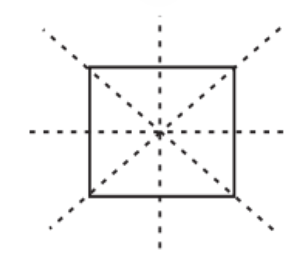Identify the following symmetries shown in the figures A and B:
 Solution in Gujrati
Solution in Gujrati
The correct Answer is:A-Radial Symmetry
B-Bilateral symmetry
Step by step video & image solution for Identify the following symmetries shown in the figures A and B: by Biology experts to help you in doubts & scoring excellent marks in Class 11 exams.
Updated on:21/07/2023Topper's Solved these Questions
Similar Questions
Study of internal structure of plants is called_____
View SolutionIf the tissue is fully burnt the remaining ash contain_____
View SolutionIdentify multiple lines of symmetry, if any, in each of the following figures:
View SolutionIdentify the symmetry of animals A and B respectively
View SolutionThe following figure shown improved breed of animal and bird. Identify A and B
View SolutionThe following figures have more than one line of symmetry. Such figures are said to have multiple lines of symmetry.

Identify multiple lines of symmetry, if any, in each of the following figures:
View SolutionIdentify multiple lines of symmetry, if any, in each of the following figures:
View SolutionDraw lines of symmetry for the following figures. Identify which' of them have point symmetry. Is there any relation between lines of symmetry and point symmetry?(pic)
View SolutionIdentify if the dotted lines in the figure below are lines of symmetry:
 .
.
View SolutionThe following figures have more than one line of symmetry. Such figures are said to have multiple lines ofsymmetry.

Identify the number of lines of symmetry
View SolutionIdentify multiple lines of symmetry, if any, in each of the following figures:

View SolutionIdentify multiple lines of symmetry, if any, in each of the following figures:

View SolutionIdentify multiple lines of symmetry, if any, in each of the following figures:

View SolutionIdentify multiple lines of symmetry, if any, in each of the following figures:

View SolutionIdentify multiple lines of symmetry, if any, in each of the following figures:

View SolutionIdentify multiple lines of symmetry, if any, in each of the following figures:

View Solution
